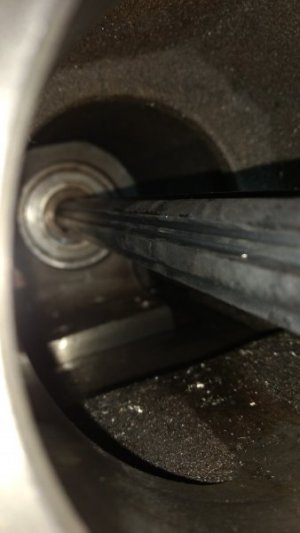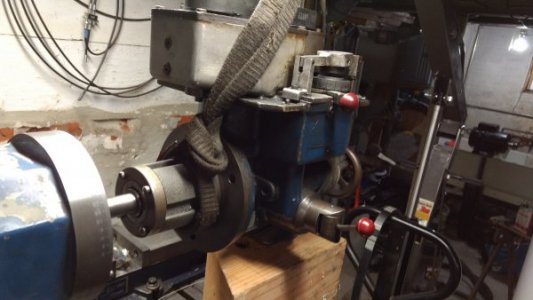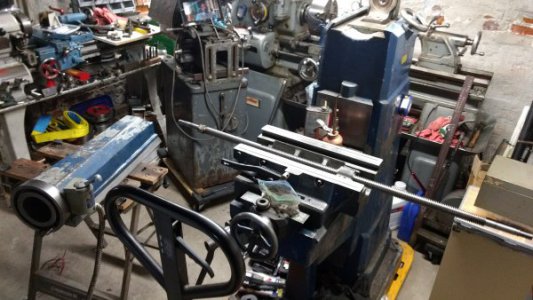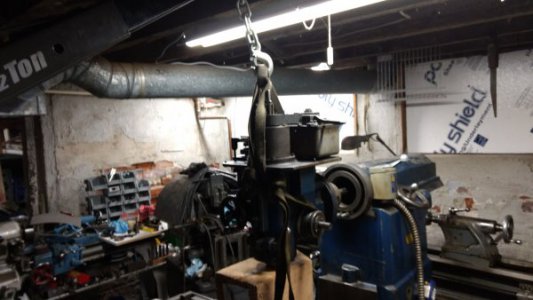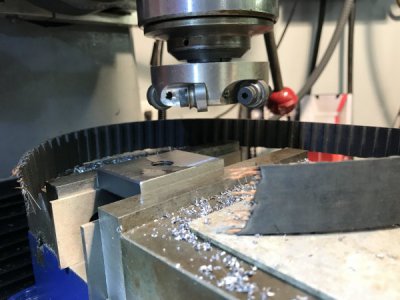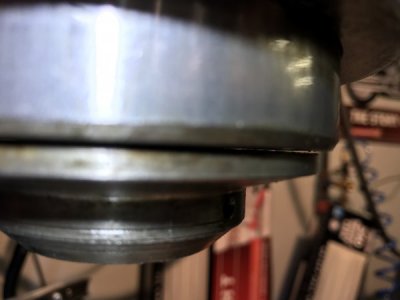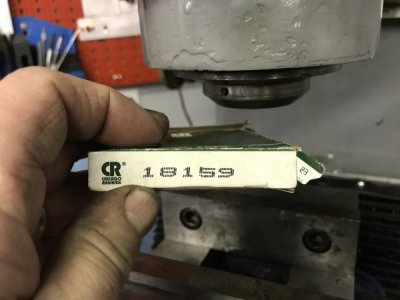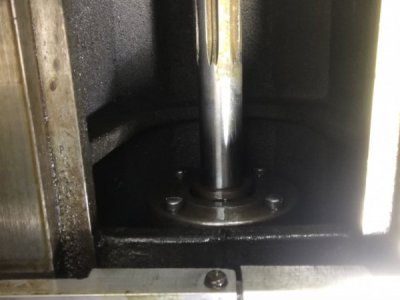The spindle on my MV100 loosen up and created a bad fly cut surface finish, then started slinging oil. I removed the bottom spindle cover by taking out the 3 set screws and prying it off with 2 screwdrivers. Made a spanner to take the large nut off and dropped the spindle out.
the nut in the center of the shaft was loose, that is what tightens the bearings against each other for the preload. I cleaned the bearings and took the spacer out and added a third bearing all with no seals, and installed an new bottom shaft seal. The spindle uses oil not grease if intended use is at high speeds. When rebuilding the spindle drill a vent hole at the top that opens to the center of the body. I had trouble filling the spindle with oil though the little cap seat port and a vent would help greatly. I took the rest of the head apart and had to rebuld the vaiable speed quill feed transmission. All the levers were btoken, I made new sheet metal leavers and brass bushings and got that working. I discovered that I had been running the main ram to head transmission without any oil, no wonder it was noisy. I put it all back togeather and filled that resivor with gear oil and it is all leaking out of the back drive shaft seal. How do I pull the head off where you loosen the three bolts and rotate the head? it can rotate it easy but not open up any gap at the interface. Is there some sort of kepper on the back side or is it just stuck?
the nut in the center of the shaft was loose, that is what tightens the bearings against each other for the preload. I cleaned the bearings and took the spacer out and added a third bearing all with no seals, and installed an new bottom shaft seal. The spindle uses oil not grease if intended use is at high speeds. When rebuilding the spindle drill a vent hole at the top that opens to the center of the body. I had trouble filling the spindle with oil though the little cap seat port and a vent would help greatly. I took the rest of the head apart and had to rebuld the vaiable speed quill feed transmission. All the levers were btoken, I made new sheet metal leavers and brass bushings and got that working. I discovered that I had been running the main ram to head transmission without any oil, no wonder it was noisy. I put it all back togeather and filled that resivor with gear oil and it is all leaking out of the back drive shaft seal. How do I pull the head off where you loosen the three bolts and rotate the head? it can rotate it easy but not open up any gap at the interface. Is there some sort of kepper on the back side or is it just stuck?


